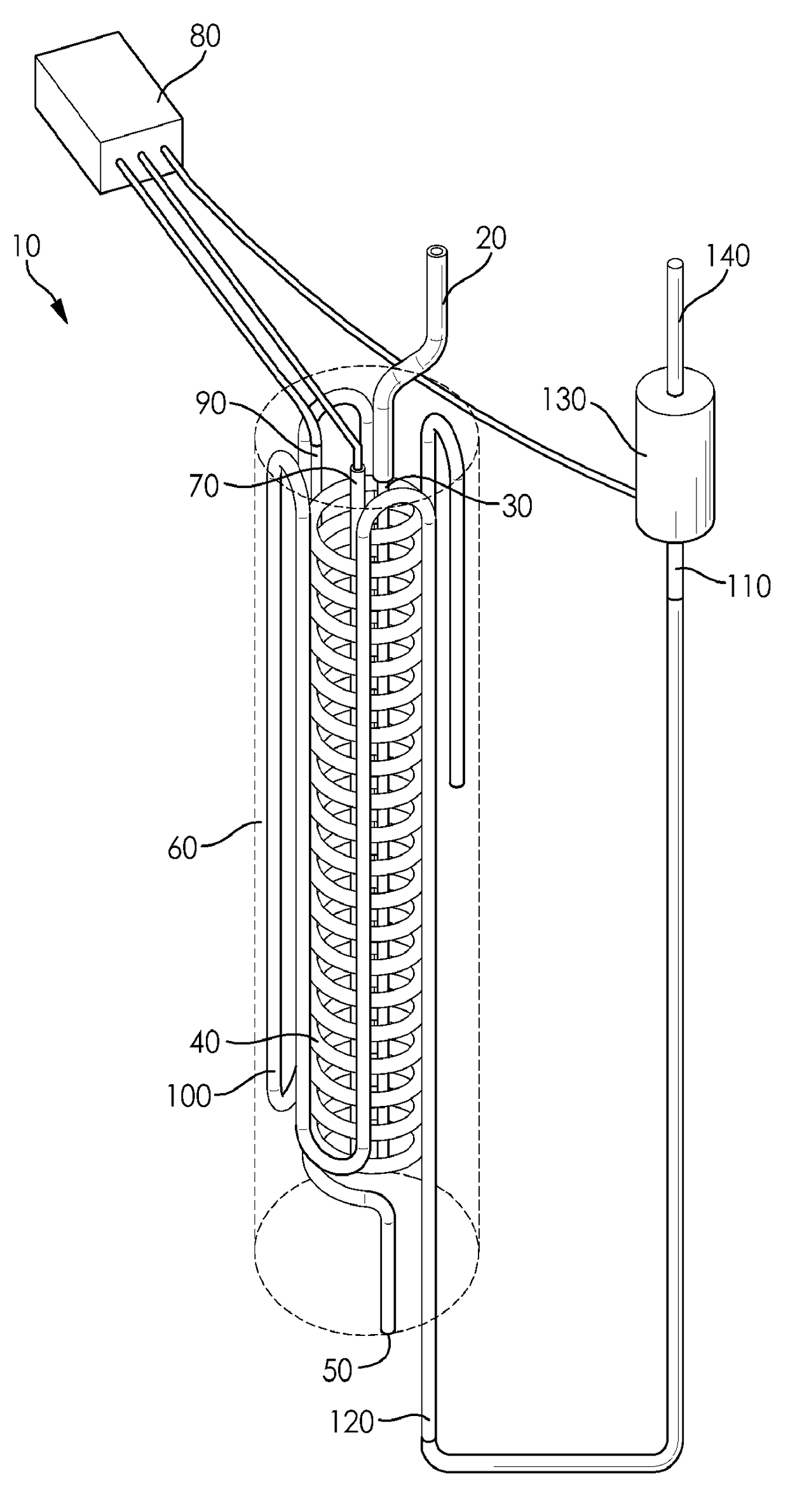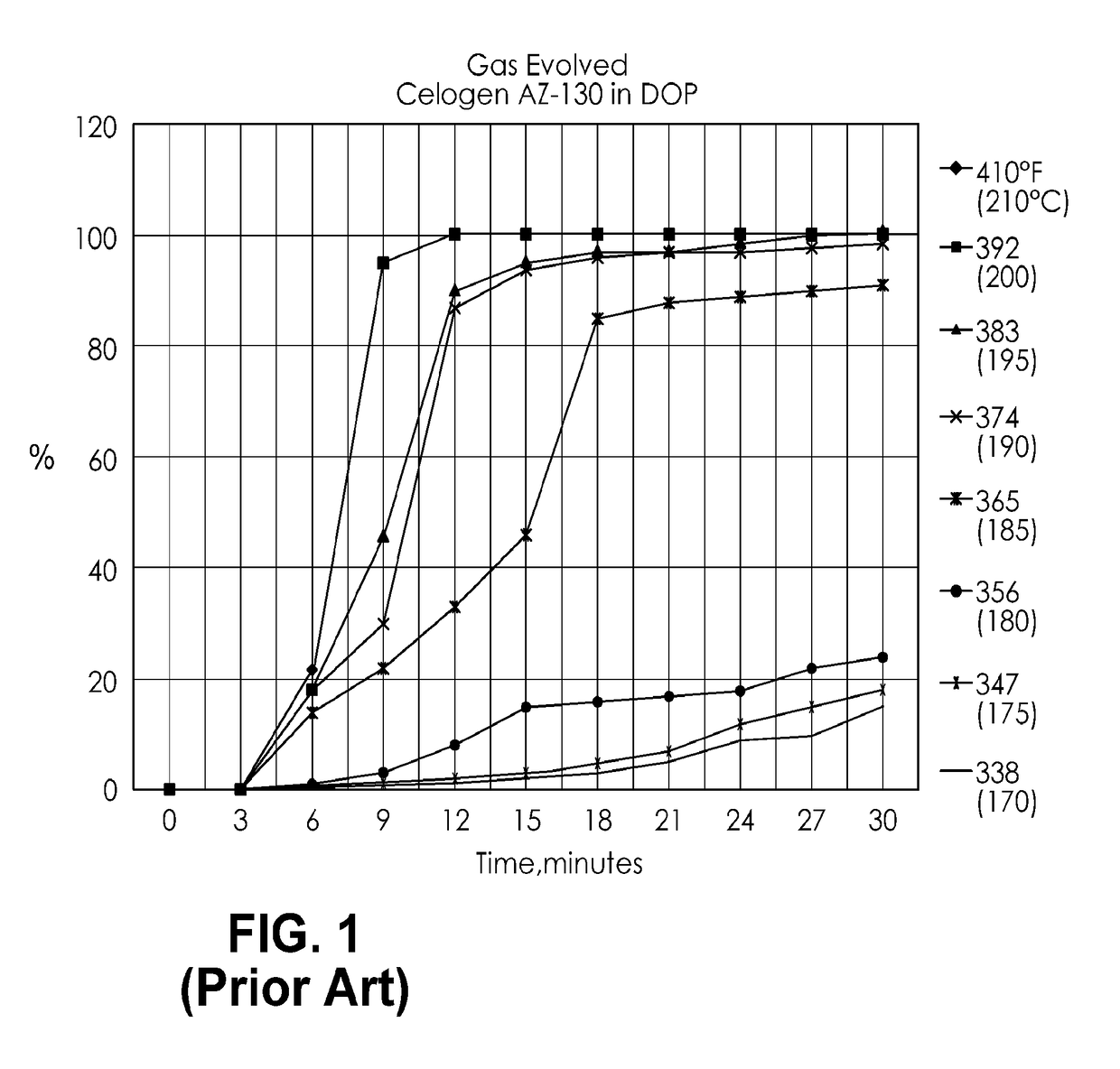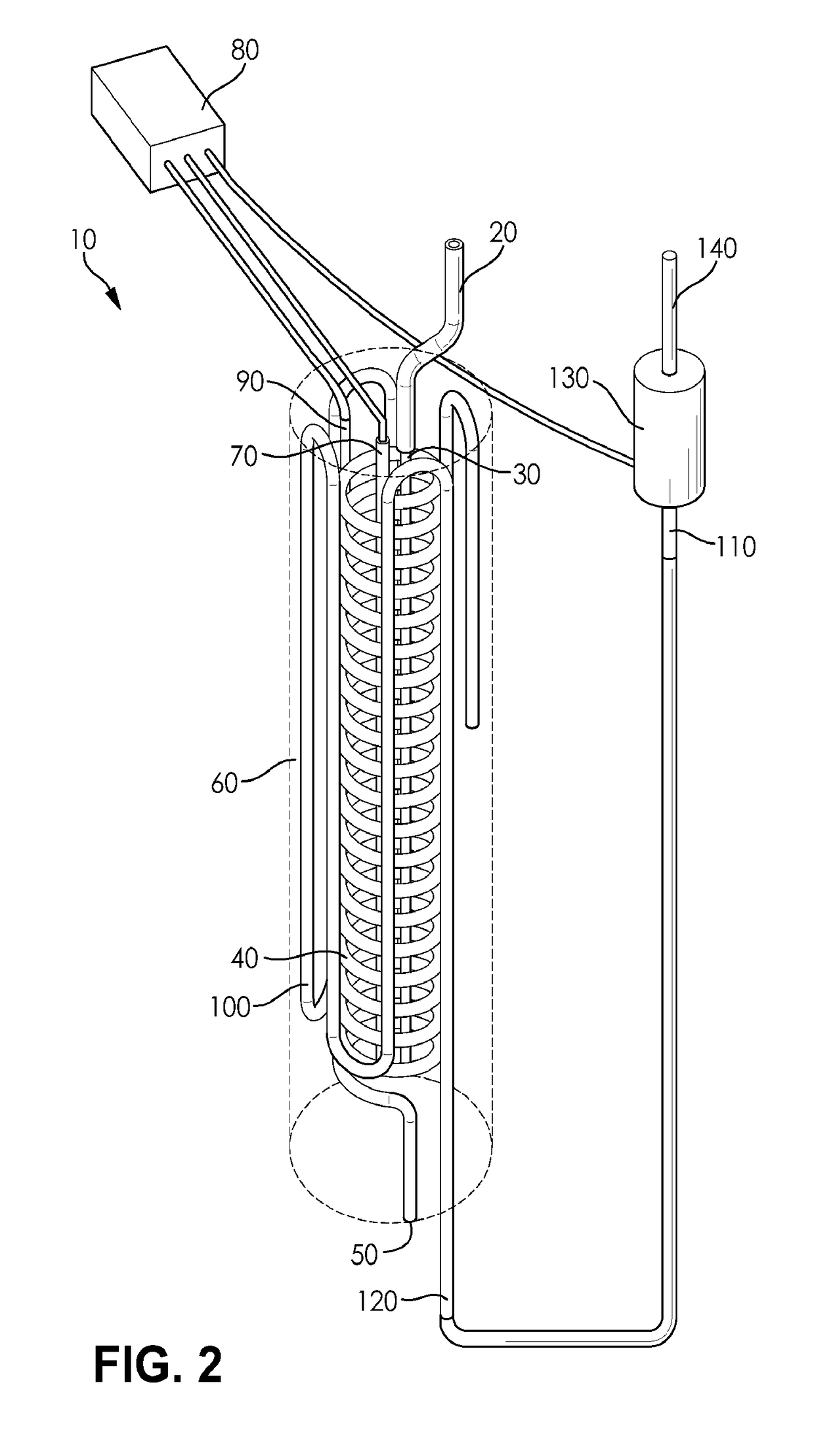Self-foaming hot melt adhesive compositions and methods of making and using same
a technology of hot melt adhesive and composition, which is applied in the direction of heat-activated film/foil adhesive, process and machine control, instruments, etc., can solve the problem that the hot melt will begin to degrad
- Summary
- Abstract
- Description
- Claims
- Application Information
AI Technical Summary
Benefits of technology
Problems solved by technology
Method used
Image
Examples
example a-1
Formation of Blowing Agent Dispersion Concentrate—Liquid
[0061]A 30% concentration of azodicarbonamide (CELOGEN AZ-130) average particle size 10 microns from Galata Chemical, Danbury, Conn., admixed with Calumet Calsol 550 (hydro-treated naphthenic petroleum oil supplied by Calumet Specialty Products LLC, Indianapolis, Ind.) was prepared at room temperature using a high speed blender at 3,200 rpm for 8 minutes. The resulting dispersion had a viscosity of 1,200 centipoise.
example a-2
Formation of Self-Foaming Hot Melt Adhesive Composition
[0062]The blowing agent dispersion concentrate formed in Example A-1 was added and blended into a metallocen base hot melt adhesive composition obtained from H.B. Fuller at a temperature of 300° F., which is above the melt temperature of the base hot melt adhesive composition but below the decomposition temperature of azodicarbonamide. The precise composition of the base hot melt adhesive composition is proprietary to the manufacturer and is not known by applicant. The “let down” rate or finished blowing agent concentration for the mixture was 1.25% by weight. Mixing was accomplished using a 1 horsepower drill at 800 rpm with a 2½″ spiral mixing head in a 12 quart mixing vessel for 5 minutes. The resulting material was poured into non-stick molds having approximate dimensions of 8″×4″×3″, and allowed to cool and resolidify into a self-foaming hot melt adhesive composition.
example a-3
Activation and Use of Self-Foaming Hot Melt Adhesive Composition
[0063]The self-foaming hot melt adhesive composition from Example A-3 was melted in a LTI Dynatec hot melt tank at 320° F. Once molten, it was pumped at 400 psi through a heat exchanger such as shown in FIGS. 2 and 3 to elevate its temperature to 410° F., thereby decomposing all of the azodicarbonamide. It was then pumped through a cooling apparatus reducing its temperature to 350° F. and dispensed into atmospheric pressure producing a hot melt foam with a bulk density 50% below the bulk density of the identical hot melt without blowing agent. The dispensed hot melt foam was used to join combinations of the following substrates together (and to each other): cardboard; cereal box cartons; filter paper; beverage carton stock; and clay-coated craft paper. Room temperature tear tests on bonded substrates revealed 100% fiber tear on all surfaces in contact with the adhesive.
PUM
| Property | Measurement | Unit |
|---|---|---|
| pressure | aaaaa | aaaaa |
| melt temperature | aaaaa | aaaaa |
| temperatures | aaaaa | aaaaa |
Abstract
Description
Claims
Application Information
 Login to View More
Login to View More - R&D
- Intellectual Property
- Life Sciences
- Materials
- Tech Scout
- Unparalleled Data Quality
- Higher Quality Content
- 60% Fewer Hallucinations
Browse by: Latest US Patents, China's latest patents, Technical Efficacy Thesaurus, Application Domain, Technology Topic, Popular Technical Reports.
© 2025 PatSnap. All rights reserved.Legal|Privacy policy|Modern Slavery Act Transparency Statement|Sitemap|About US| Contact US: help@patsnap.com



